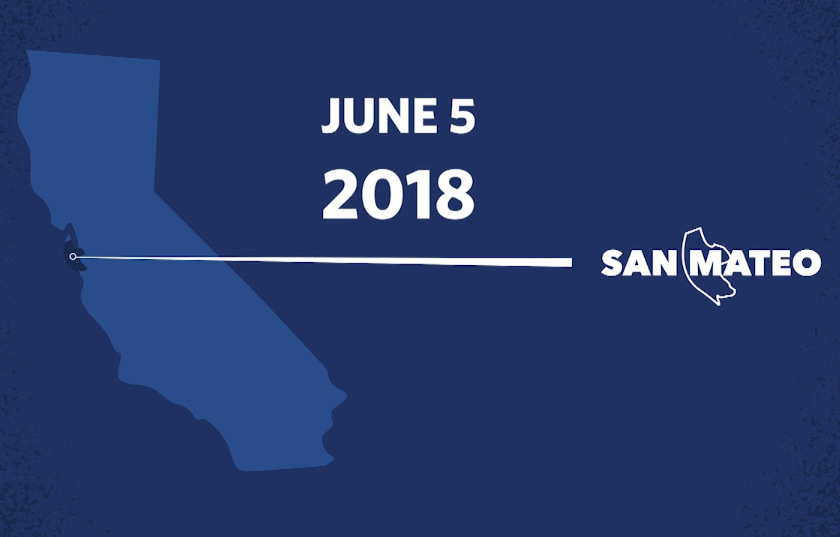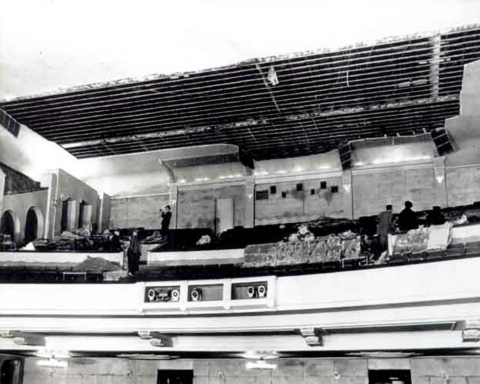San Mateo County elections officials finally finished counting almost all the June 5 primary ballots yesterday and there are a few interesting details to be gleaned before we move on to November’s monster-sized ballot.
There were two local cliffhangers awaiting the outcome of the vote count – a process prolonged by an uncommonly high voter turnout due to all-mail balloting.
The race between Nancy Magee and Gary Waddell for county Superintendent of Schools was finally decided. Yesterday’s report showed Magee ahead by 1,157 votes with so few uncounted ballots left that it was clear she was the winner.
Waddell issued a gracious concession statement via Facebook late yesterday that included this uplifting comment: “Nancy and I agree on much more than we disagree. We both believe in the importance of student voice, of innovative approaches to education, and of building a County Office of Education that is forward-thinking and makes an impact in the lives of children and families. I will do everything in my power to assist Nancy in accomplishing these goals.”
The race between Magee and Waddell was a model of civility in a political environment almost entirely devoid of such qualities – positive, issue-focused and without a whiff of one candidate attacking the other.
One element of Waddell’s platform I found particularly appealing was his promise to revive the teaching of civics in our schools. I fervently hope Magee will embrace that idea.
ALMOST A SWEEP: The other close one was the proposed parcel tax in the Belmont-Redwood Shores School District, which was agonizingly short of the required two-thirds approval – until yesterday, when the latest count showed it won 67.1 percent of the vote.
The news touched off expressions of relief and gratitude among the supporters. … Of the nine school measures on the ballot – either bonds or parcel taxes – eight of them passed, demonstrating, again, that San Mateo County voters support funding for schools.
The only one that didn’t pass is a bond measure in the Half Moon Bay-based Cabrillo Unified School District. The measure needed 55 percent to pass and as of yesterday, it was at 54.91 percent.
That’s an amazing seven votes shy of passage.
GOING POSTAL: Nearly 166,000 ballots were cast in San Mateo County – a turnout of 42.7 percent, higher than was projected by county elections chief Mark Church, although given the unique nature of this election, a missed projection is understandable.
Clearly, the all-mail balloting was a huge success. With no major controversy on the local ballot, or on the statewide ballot for that matter, San Mateo County turnout was 15 points higher than 2014’s primary turnout of 27.5 percent.
In fact, it was the county’s highest turnout in a gubernatorial primary in this still-young century. A quick review of records at the California Secretary of State’s website shows it’s the highest turnout in a similar election since before 1990.
The five counties that opted for the all-mail balloting all had turnout higher than the state’s 25.2 percent. … Sacramento County was 41.4 percent, Napa County was 47.3 percent, Madera County was 44.1 percent and Nevada County was 56.9 percent.
A DIVIDED CALIFORNIA: Reviewing the statewide voting showed a state significantly divided within itself.
In all the statewide partisan races, a Democrat was the top vote-getter. But look at the maps and you see Democrats winning almost exclusively within the western, coastal counties and Republicans winning almost every county east of the narrow coastal strip.
The only exception: U.S. Sen. Dianne Feinstein, who won every county in the state. A juggernaut.
The top-getter statewide? Incumbent Controller Betty Yee. Why? Why not?
For all the well-deserved disdain and criticism being heaped on Tim Draper’s proposal to split California into three, it is clear the state is as politically split as the country.
This should come as no surprise. Like the rest of the country, California is composed largely of urban and rural economies. Despite the increasingly common strains of popular culture, we still lead lives substantially different from one another.
The answer is not to further split us up, or even to touch off a statewide debate that emphasizes and hardens those differences. The answer is to seek out those things we have in common and work together from there.
That’s why Draper’s proposal is not goofy – it’s dangerous.
It seeks to move the public dialogue in exactly the wrong direction.
Contact Mark Simon at mark@climaterwc.com.
*The opinions expressed in this column are the author’s own and do not necessarily reflect the views of Climate Online.






